- The Origins and Varieties of Begonias
- Varieties of Begonias
- Origins of Begonias
- Choosing the Right Begonia for Your Indoor Garden
- Consider Lighting Conditions
- Choose the Right Size
- Determine Your Preferred Blooming Pattern
- Consider Care Requirements
- Seek Professional Advice
- Tips for Planting and Potting Begonias
- 1. Choose the right type of begonia
- 2. Select a suitable container
- 3. Use well-draining soil
- 4. Provide the right amount of light
- 5. Water regularly
- 6. Fertilize regularly
- 7. Watch for pests and diseases
- Providing Adequate Light and Temperature
- 1. Light Requirements
- 2. Temperature Requirements
- 3. Humidity Requirements
- Watering and Fertilizing Begonia Plants
- Watering:
- Fertilizing:
- Pruning and Propagation Techniques
- Pruning
- Propagation
- Common Pests and Diseases of Begonias
- Pests
- Diseases
- Troubleshooting Tips to Keep Your Begonia Healthy
- 1. Yellowing Leaves
- 2. Leaf Spots
- 3. Stunted Growth
- 4. Wilting
- 5. Pests
- 6. Flower Drop
- 7. Root Rot
- Q&A:
- What are some tips for successfully growing begonias at home?
- Which begonia variety is best for indoor growing?
- How often should I water my begonia?
- Can begonias tolerate direct sunlight?
- What type of soil is best for begonias?
- Should I fertilize my begonias?
- How often should I repot my begonias?
- Video: How to Plant Double Begonias: Summer Garden Guide
Growing begonias at home can be a rewarding and enjoyable experience for any gardening enthusiast. Begonias are known for their vibrant, showy flowers and attractive foliage, making them a popular choice for indoor and outdoor gardens alike. Whether you are a beginner or have some experience with gardening, these tips will help you successfully grow begonias at home.
Choose the right variety: There are many different types of begonias, each with its own unique characteristics and growing requirements. Before you start growing begonias, it’s important to research and choose the variety that suits your preferences and growing conditions. Some popular begonia varieties include wax begonias, tuberous begonias, and rex begonias.
Provide the right growing conditions: Begonias thrive in bright, indirect light, so it’s important to place them in a location where they will receive ample sunlight without being exposed to direct sunlight. They also prefer well-draining soil and thrive in temperatures between 65°F and 75°F. It’s important to water begonias consistently, keeping the soil moist but not waterlogged.
Tip: If your begonias are not blooming, try moving them to a location with more light or adjusting the watering schedule.
Prune and fertilize regularly: Regular pruning and fertilizing are important to keep begonias healthy and promote blooming. Prune any dead or damaged leaves or flowers to encourage new growth. Additionally, fertilize your begonias with a balanced, water-soluble fertilizer every 2-4 weeks during the growing season to provide them with the nutrients they need.
Take precautions against pests: Like any houseplant, begonias are susceptible to pests such as aphids, mealybugs, and spider mites. Regularly inspect your begonias for signs of pest infestation, such as yellowing leaves or sticky residue on the leaves. If you notice any pests, treat your plants with an appropriate insecticide or try using natural remedies like neem oil or insecticidal soap.
By following these tips, you can enjoy beautiful, healthy begonias in your home or garden. Remember to be patient and experiment with different growing conditions to find what works best for your begonias. Happy gardening!
The Origins and Varieties of Begonias
Begonias belong to the family Begoniaceae and are native to tropical and subtropical regions around the world. They were first discovered in the 17th century by a French botanist named Charles Plumier, who named the genus after his friend and famous botanist, Michel Bégon. Since then, begonias have become popular ornamental plants and are widely cultivated for their beautiful flowers and foliage.
Varieties of Begonias
There are thousands of begonia species and cultivars available, each with its own unique characteristics. Here are some popular varieties:
- Rex Begonias: Known for their striking foliage, rex begonias have large leaves with vibrant colors and interesting textures. They are often grown as houseplants.
- Tuberous Begonias: Tuberous begonias produce large, showy flowers in a wide range of colors. They are commonly grown in containers or hanging baskets.
- Fibrous Begonias: Fibrous begonias have fibrous roots and are known for their long-lasting flowers. They come in various shades of white, pink, and red.
- Angel Wing Begonias: Angel wing begonias have wing-shaped leaves and produce clusters of delicate flowers. They are often used as hanging plants.
- Cane-like Begonias: Cane-like begonias have thick, bamboo-like stems and large, asymmetrical leaves. They can grow tall and are suitable for larger containers.
Origins of Begonias
Begonias are indigenous to tropical and subtropical regions of Asia, Africa, and America. They are found in countries such as Brazil, Mexico, Australia, and Indonesia. Due to their adaptability, begonias have been successfully introduced to other parts of the world and are now cultivated globally.
| Region | Native Begonia Species |
|---|---|
| Asia | Begonia rex, Begonia semperflorens |
| Africa | Begonia dregei, Begonia fischeri |
| America | Begonia cucullata, Begonia luxurians |
Begonias have a rich diversity and can be found in various habitats, including forests, mountains, and wetlands. They have evolved to thrive in different environmental conditions, which makes them adaptable houseplants that can be grown indoors or outdoors with proper care.
Choosing the Right Begonia for Your Indoor Garden
When it comes to indoor gardening, begonias are a popular choice due to their beautiful foliage and vibrant blooms. With a wide variety of begonia species and cultivars available, choosing the right one for your indoor garden can be overwhelming. Here are some tips to help you pick the perfect begonia for your space.
Consider Lighting Conditions
One of the most important factors to consider when choosing a begonia for your indoor garden is the lighting conditions in your space. Begonias thrive in bright, indirect light, so look for species or cultivars that can tolerate lower light levels if your space doesn’t receive a lot of natural sunlight. On the other hand, if you have a bright, sunny spot, opt for begonias that can handle direct sunlight.
Choose the Right Size
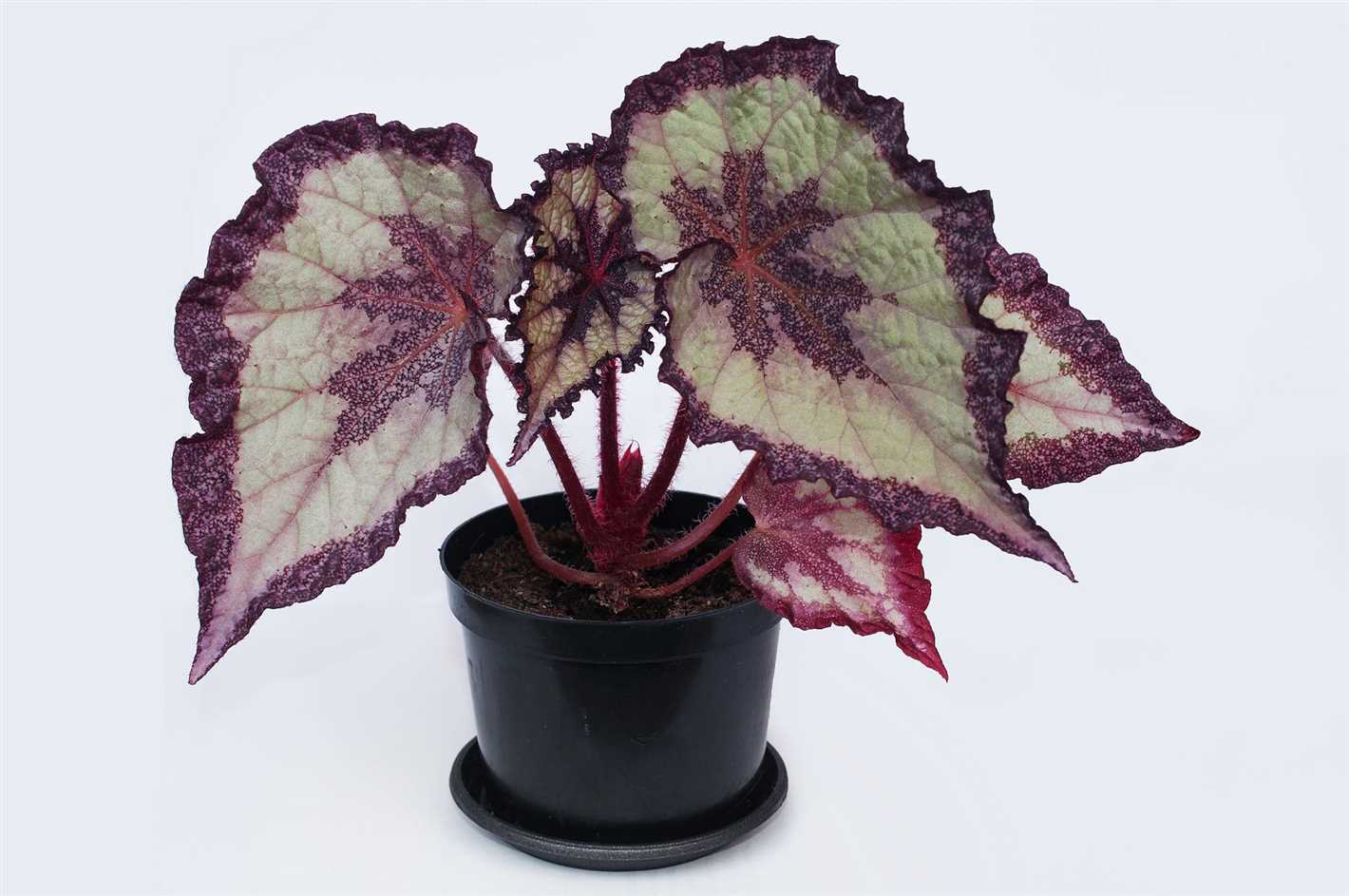
Begonias come in various sizes, ranging from small, compact plants to large, bushy ones. Consider the available space in your indoor garden and choose a begonia that fits well. If you have limited space, go for smaller begonia varieties or those that can be easily pruned and controlled in size. Conversely, if you have ample space, you can opt for larger begonias that make a bold statement.
Determine Your Preferred Blooming Pattern
Begonias exhibit different blooming patterns, with some producing continuous blooms throughout the year and others blooming seasonally. Decide whether you want your begonia to bloom all year long or prefer a specific blooming season. This will help you narrow down your options and choose a begonia that aligns with your preferences.
Consider Care Requirements
Before selecting a begonia for your indoor garden, consider the care requirements of the plant. Some begonias are more high-maintenance, requiring specific temperature, humidity, and watering conditions. Others are more forgiving and can tolerate a wider range of care practices. Assess your ability to meet the care needs of the begonia and choose a variety accordingly.
- Research the specific care instructions for each begonia variety you are considering.
- Assess your ability to provide the necessary care, including temperature and humidity control.
- Consider how often you are willing to water and fertilize the begonia.
Seek Professional Advice
If you’re still unsure about which begonia to choose for your indoor garden, don’t hesitate to seek advice from a local nursery or an experienced gardener. They can provide valuable insights based on your specific gardening conditions and help you select the right begonia for your needs.
By considering factors such as lighting conditions, size, blooming pattern, and care requirements, you can choose the perfect begonia for your indoor garden. Whether you opt for a small, low-light begonia or a large, sun-loving variety, your indoor space will be enhanced with the beauty of these fascinating plants.
Tips for Planting and Potting Begonias
If you are looking to add some color and beauty to your home or garden, begonias are a great choice. These versatile plants come in a variety of colors and sizes, and can be grown indoors or outdoors with the right care. Here are some tips for successfully planting and potting begonias:
1. Choose the right type of begonia
There are many different types of begonias to choose from, including tuberous, fibrous, and rhizomatous begonias. Each type has its own specific growth patterns and care requirements, so do some research to find the one that is best suited for your needs.
2. Select a suitable container
When potting begonias, it is important to choose a container that has good drainage. Begonias prefer moist, but not waterlogged, soil, so make sure the pot has drainage holes in the bottom.
3. Use well-draining soil
Begonias thrive in well-draining soil that is rich in organic matter. A mixture of potting soil, perlite, and peat moss is a good choice for begonias. Avoid heavy or compacted soils that can hold too much moisture.
4. Provide the right amount of light
Most begonias prefer bright, indirect light. Place them near a window where they can receive plenty of light, but avoid direct sunlight, as it can scorch the leaves. If growing begonias indoors, consider using artificial grow lights to supplement natural light.
5. Water regularly
Keep the soil evenly moist, but avoid overwatering. Begonias prefer slightly moist soil, so allow the top inch of soil to dry out slightly between waterings. Water at the base of the plant to avoid getting the leaves wet, as this can lead to disease.
6. Fertilize regularly
Begonias benefit from regular feedings with a balanced fertilizer. Use a liquid fertilizer that is specifically formulated for flowering plants, and follow the instructions on the label for application rates.
7. Watch for pests and diseases
Begonias can be susceptible to pests such as aphids, spider mites, and mealybugs, as well as diseases like powdery mildew and botrytis. Regularly inspect your plants for any signs of pest or disease, and take appropriate action if necessary.
By following these tips, you can successfully plant and pot begonias to add beauty and color to your home or garden. With the right care, begonias can thrive and provide enjoyment for years to come.
Providing Adequate Light and Temperature
When it comes to growing Begonias successfully at home, providing adequate light and maintaining the right temperature are crucial factors to consider. Begonias require a specific amount of light and temperature to thrive and produce beautiful blooms. Here are some tips to help you provide the optimal conditions for your Begonias:
1. Light Requirements
- Place your Begonias in a location where they can receive bright, indirect sunlight. Avoid placing them in direct sunlight, as it can scorch their delicate leaves.
- If you have a south-facing window, it is an ideal spot for Begonias, as they can get the required amount of light without being exposed to direct sunlight.
- If you don’t have enough natural light in your home, you can use artificial grow lights to supplement the lighting needs of your Begonias. Choose a grow light that emits full spectrum light to mimic natural sunlight.
2. Temperature Requirements
- Begonias prefer moderate temperatures between 60°F (15°C) and 75°F (24°C). Avoid exposing them to extreme temperature fluctuations.
- Keep your Begonias away from drafty areas, such as near doors or windows, to prevent damage from cold drafts.
- During the winter, it may be necessary to provide additional warmth for your Begonias. You can use a space heater or place them on top of a heating mat to maintain the ideal temperature.
3. Humidity Requirements
- Begonias thrive in high humidity levels. To increase humidity around your Begonias, you can place a humidity tray filled with water near them or use a humidifier in the room.
- Misting the leaves of your Begonias with water can also help to increase humidity and prevent them from drying out.
By providing adequate light and maintaining the right temperature and humidity levels, you can create a favorable environment for your Begonias to grow and flourish. Remember to monitor the conditions regularly and make necessary adjustments to ensure the well-being of your plants.
Watering and Fertilizing Begonia Plants
Proper watering and fertilization are essential for the healthy growth of begonia plants. In this section, we will discuss the best practices for watering and fertilizing your begonia plants to ensure their overall well-being.
Watering:
Begonias prefer a moist but well-drained soil. Overwatering can lead to root rot, while underwatering can cause the plant to wither and die. Follow these guidelines to water your begonia plants correctly:
- Check the moisture level in the soil by inserting your finger about an inch deep into the soil. If it feels dry, it’s time to water the plant.
- Water the plant thoroughly, allowing the excess water to drain out through the drainage holes. Avoid letting the plant sit in standing water.
- Make sure to water the plant at the base, avoiding overhead watering, as it can lead to fungal diseases.
- During the growing season, water the begonias more frequently, keeping the soil consistently moist but not waterlogged.
- In winter or during the dormant period, reduce watering to prevent overwatering and root rot.
Fertilizing:
Begonias benefit from regular fertilization to support their growth and flowering. Follow these tips for fertilizing your begonia plants:
- Choose a balanced water-soluble fertilizer with equal amounts of nitrogen, phosphorus, and potassium.
- Dilute the fertilizer according to the instructions on the packaging to avoid over-fertilizing the plants.
- Apply the fertilizer every 4-6 weeks during the growing season, starting in spring and continuing until late summer or early fall.
- Apply the fertilizer to the soil around the base of the plant, avoiding contact with the leaves or flowers.
- Water the plant after fertilizing to help the nutrients penetrate the soil.
By following these watering and fertilizing practices, you can ensure that your begonia plants thrive and reward you with vibrant foliage and beautiful blooms.
Pruning and Propagation Techniques
Pruning
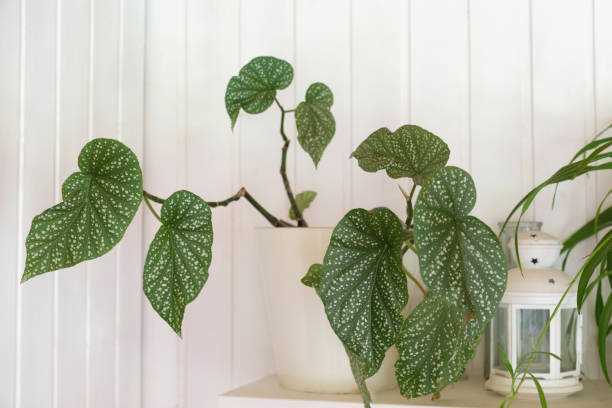
Pruning is an essential practice in maintaining the health and appearance of your begonia plants. Here are some tips for successful pruning:
- Start pruning your begonia plants in early spring, before new growth appears.
- Remove any dead or damaged foliage or stems. This will promote better air circulation and prevent the spread of diseases.
- Trim back overgrown or leggy stems to encourage bushier growth. Cut these stems just above a leaf node to promote new growth from the remaining buds.
- Regularly pinch off the tips of young begonia plants to encourage branching and a more compact shape.
Propagation
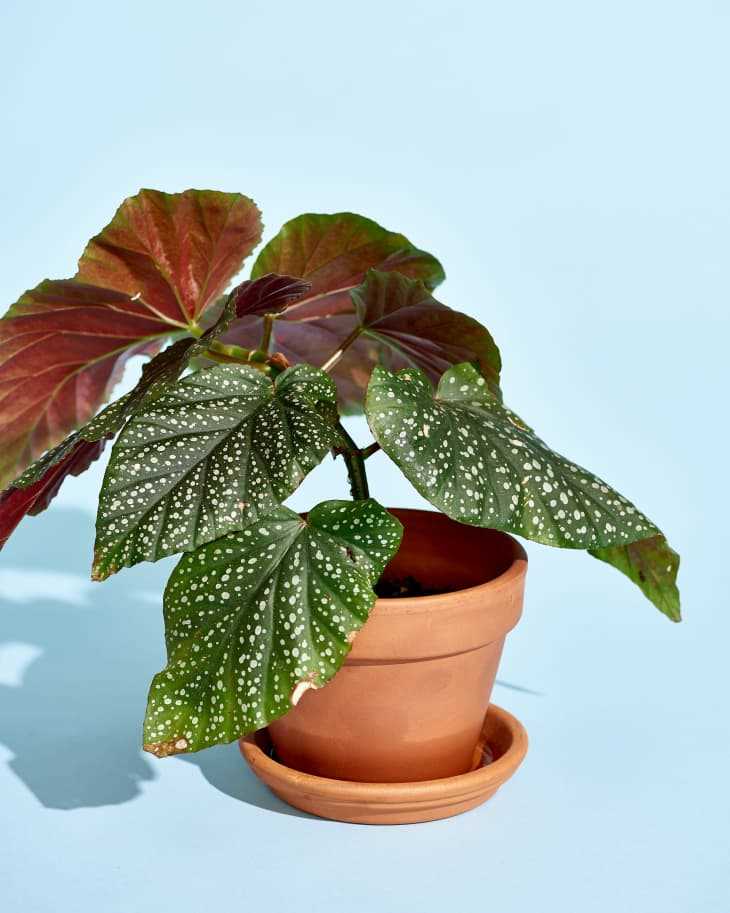
Propagating begonias can be a rewarding way to expand your collection. Here are some methods you can try:
- Leaf cuttings: Take a healthy leaf and cut it into sections. Dip the cut ends in rooting hormone and plant them in a well-draining potting mix. Keep the soil consistently moist until new plants develop.
- Stem cuttings: Cut a stem with several nodes and remove the lower leaves. Dip the cut end in rooting hormone and plant it in a potting mix. Keep the soil moist and place the cutting in a warm, bright location until roots develop.
- Division: Divide a mature begonia plant by carefully separating the rhizomes or tubers. Each division should have several stems and roots. Replant the divisions in separate pots.
Remember to provide the proper care and nurturing for your newly propagated begonias to increase their chances of successful establishment.
Common Pests and Diseases of Begonias
Begonias are generally hardy plants, but they can still be susceptible to a few common pests and diseases. By understanding these potential problems, you can take proactive steps to keep your begonias healthy and thriving.
Pests
1. Aphids: These small, soft-bodied insects feed on the sap of the begonia plant, causing stunted growth and deformed leaves. You can control aphids by using insecticidal soap or a strong spray of water to dislodge them.
2. Spider Mites: These tiny pests are common in warm and dry conditions. They suck the sap from the leaves, causing yellowing and even leaf drop. Regularly misting the leaves and maintaining a higher humidity level can help prevent spider mite infestations.
3. Mealybugs: Mealybugs are small, white insects that cluster on the undersides of begonia leaves and stems. They suck the sap from the plant and excrete a sticky substance called honeydew. In severe infestations, mealybugs can weaken the plant and cause leaf curling. To control mealybugs, you can remove them manually with a cotton swab dipped in rubbing alcohol or use insecticidal soap.
Diseases
1. Powdery Mildew: Powdery mildew is a common fungal disease that appears as a white powdery coating on the leaves. It can cause leaf curling, yellowing, and stunted growth. To prevent powdery mildew, provide good air circulation by spacing plants properly and avoiding overwatering. Fungicidal sprays can also be used to control the disease.
2. Rhizoctonia Root Rot: This soil-borne fungus can cause root rot in begonias, leading to wilting and stunted growth. To prevent this disease, make sure the soil is well-draining and avoid overwatering. If root rot does occur, remove the affected plants and treat the soil with a fungicide.
3. Botrytis Blight: Botrytis blight, also known as gray mold, is a fungal disease that can affect begonias. It causes grayish brown spots on leaves and flowers, as well as wilting and decay. To prevent botrytis blight, avoid overhead watering and maintain good air circulation by spacing plants properly. Infected plants should be removed, and fungicidal sprays can help control the disease.
By being aware of these common pests and diseases, you can take the necessary precautions to keep your begonias healthy. Regularly inspect your plants for any signs of infestation or disease, and take immediate action to address the issue. With proper care, your begonias will continue to thrive and add beauty to your home garden.
Troubleshooting Tips to Keep Your Begonia Healthy
While begonias are generally easy to care for, they can sometimes encounter problems that affect their health and appearance. Here are some common issues you may face when growing begonias and how to address them:
1. Yellowing Leaves
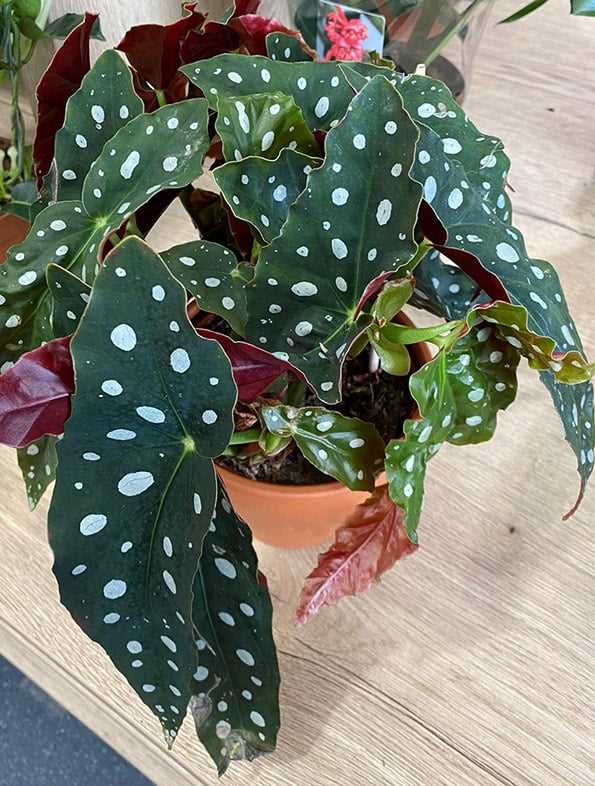
If your begonia’s leaves are turning yellow, it could be a sign of over-watering. Check the soil moisture and adjust your watering schedule accordingly. Make sure the pot has good drainage and allow the soil to dry out slightly between waterings.
2. Leaf Spots
Leaf spots can be caused by various factors, including fungal and bacterial infections or sunburn. Remove affected leaves and improve air circulation around the plant by spacing out neighboring plants. Avoid overhead watering and reduce humidity levels to prevent the spread of diseases.
3. Stunted Growth
If your begonia is not growing as expected, it could be due to inadequate lighting or nutrients. Ensure your plant receives bright, indirect light for around 6-8 hours a day. Fertilize regularly with a balanced fertilizer, following the instructions on the label.
4. Wilting
Wilting can be a sign of both under-watering and over-watering. Check the soil moisture and adjust your watering routine accordingly. Additionally, make sure your begonia is not exposed to cold drafts or extreme temperatures, as this can also cause wilting.
5. Pests
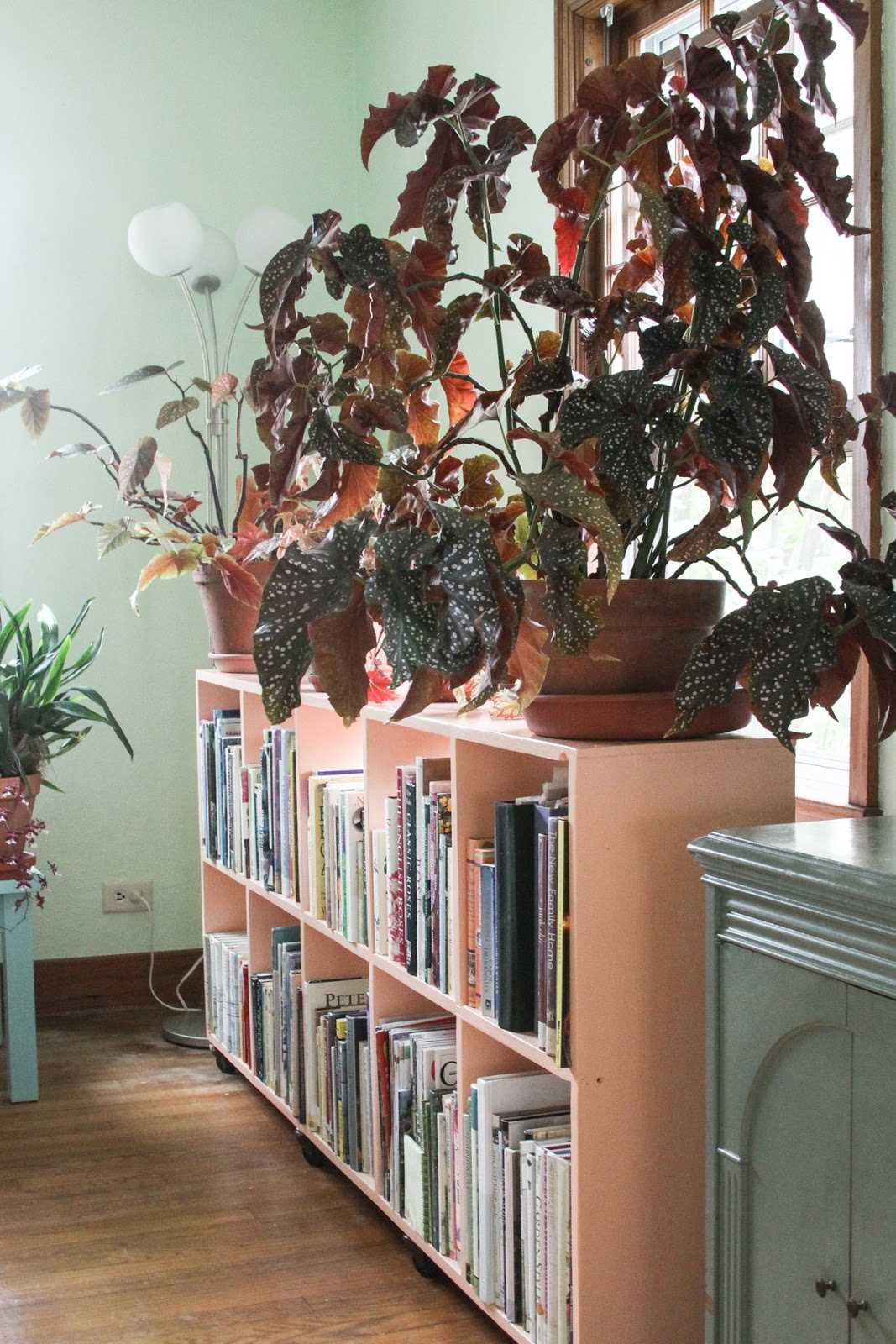
Begonias can be susceptible to pests such as aphids, mealybugs, and spider mites. Inspect your plant regularly for any signs of infestation, such as tiny insects, webbing, or sticky residue. Treat pests with insecticidal soap or neem oil, following the instructions on the product label.
6. Flower Drop
If your begonia’s flowers are dropping prematurely, it may be due to excessive heat, inadequate light, or irregular watering. Ensure your plant is kept in a location with bright indirect light and maintain consistent moisture levels.
7. Root Rot
Root rot can occur when the soil is too wet and lacks proper drainage. If you notice a foul odor or dark, mushy roots, it’s a sign of root rot. Remove the damaged roots, repot the plant in fresh, well-draining soil, and adjust your watering routine to prevent future rot.
By identifying and addressing these common issues, you can keep your begonia healthy and thriving. Remember to monitor your plant regularly and provide it with the proper care it needs to flourish.
Q&A:
What are some tips for successfully growing begonias at home?
Some tips for successfully growing begonias at home include choosing the right variety for your growing conditions, providing the proper amount of light and water, using well-draining soil, and fertilizing regularly.
Which begonia variety is best for indoor growing?
For indoor growing, it is best to choose a begonia variety that can tolerate lower light levels. Some good options include rex begonias, angel wing begonias, and rhizomatous begonias.
How often should I water my begonia?
The frequency of watering begonias depends on various factors such as the temperature, humidity, and pot size. Generally, begonias prefer to be kept slightly moist, so water them when the top inch of soil feels dry.
Can begonias tolerate direct sunlight?
Most begonias prefer bright, indirect light rather than direct sunlight. However, some varieties can tolerate a few hours of direct sunlight each day. It is best to research the specific variety you have to determine its sunlight requirements.
What type of soil is best for begonias?
Begonias prefer a well-draining soil that retains some moisture but does not stay soggy. A mixture of peat moss, perlite, and vermiculite is often recommended for begonias.
Should I fertilize my begonias?
Yes, it is recommended to fertilize begonias regularly during the growing season to promote healthy growth and abundant blooming. Use a balanced, water-soluble fertilizer and follow the package instructions for application rates.
How often should I repot my begonias?
Begonias generally need to be repotted every 1-2 years, or when they become pot-bound. Signs that a begonia needs to be repotted include roots growing out of the drainage holes, slow growth, and the soil drying out quickly after watering.
Video:
How to Plant Double Begonias: Summer Garden Guide







